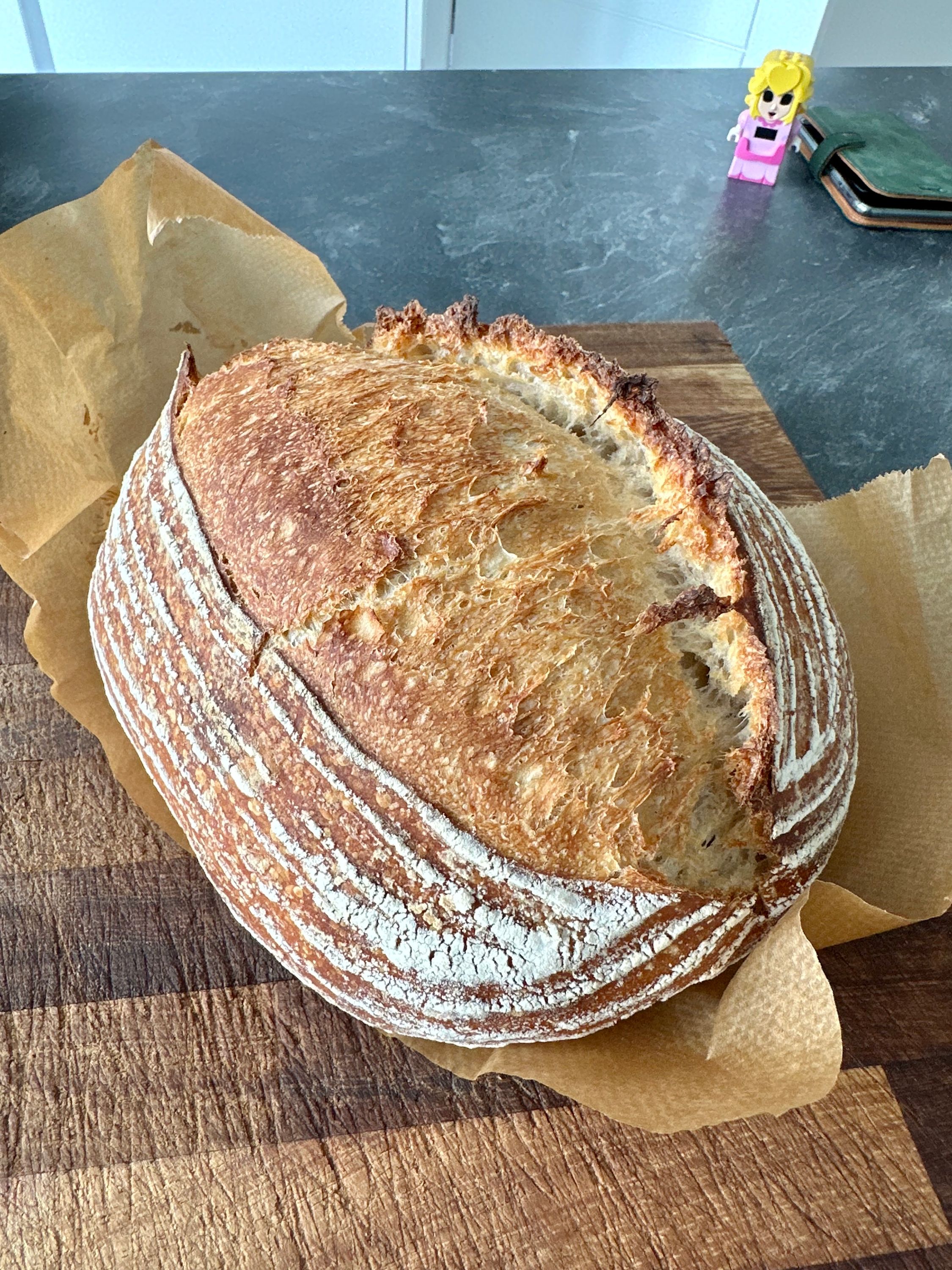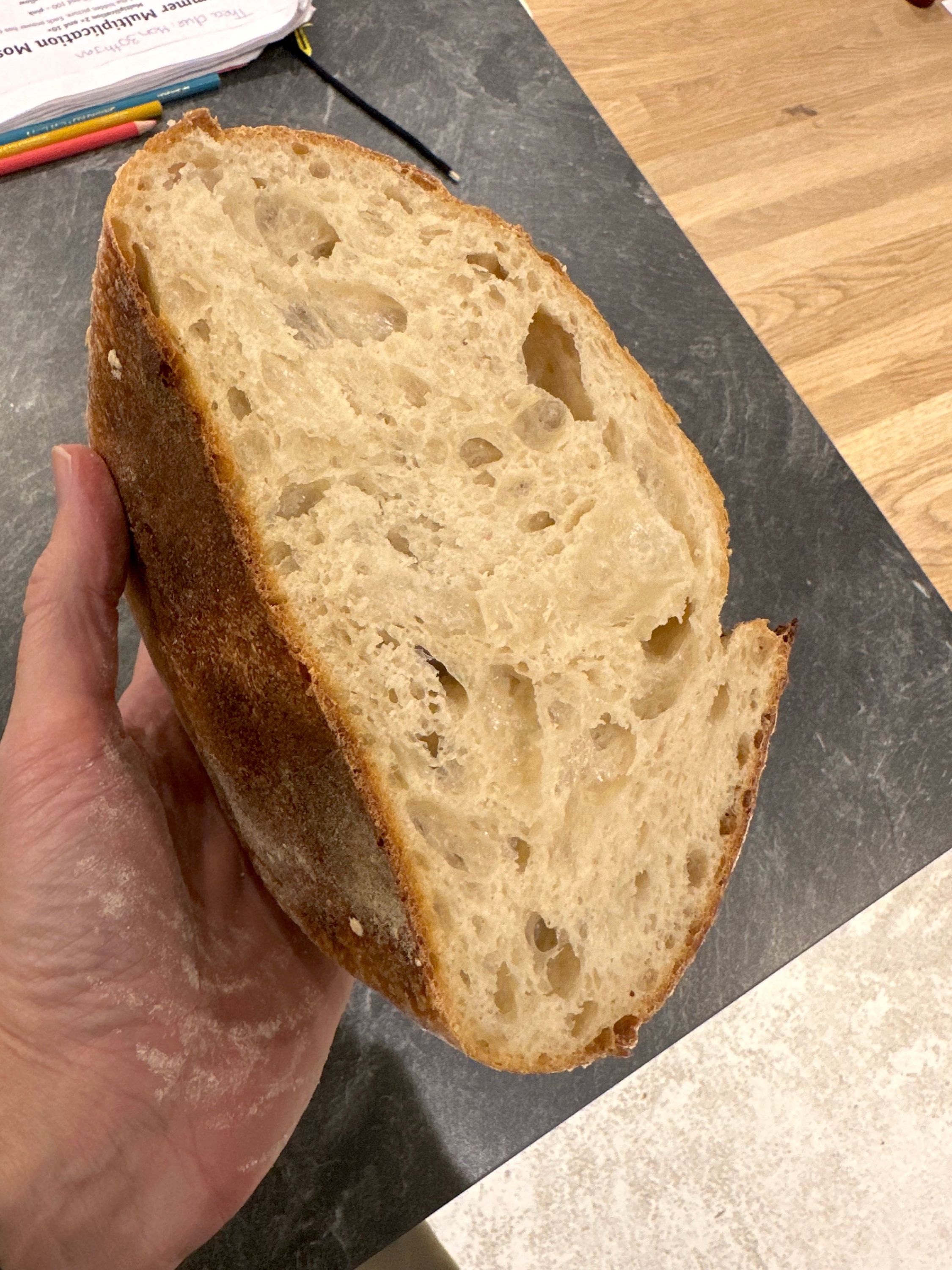My standard sourdough bread recipe
The purpose of writing-up this recipe is that I wanted to share a simple, no-nonsense daily bake that tastes great and doesn’t require a ridiculous amount of process or effort. I reckon there’s not much more than 15 minutes of working time required, and the final results are great.
 Example output
Example output  The crumb of the output
The crumb of the output
Ingredients
Starter (at 100% hydration) - 100g
Water at room temperature - 300g (can go up to 330g)
Flour (I use Shipton Mill Strong White) - 450g
Salt - 12g
100% hydration means that the starter is fed with equal amounts of flour and water. I tend not to feed the starter between bakes as I’m usually baking often-enough that it stays fairly lively, but if I’ve not baked for a while I’ll feed it a few days before I’m planning on baking.
Preparation (2 days before you want your loaf)
Feed the starter before you go to bed with 50g water and 50g flour (I tend to use light rye flour). Don’t put this in the fridge, leave it on the counter.
Start - the morning of the day before you want your loaf
- Ensure the starter is lively - check with a float test by dropping a small amount of the starter into water and checking to see it floats
- In a large wide-mouthed mixing bowl mix the starter into the water until dispersed throughout
- Add flour and salt, mix to shaggy mess
- Mist with water and cover bowl with towel
+30mins (30min elapsed)
- Wet hands
- Stretch and fold the dough about a dozen times in the bowl, you should feel the structure change from rough to smooth
- Cover again
+2h (2h 30min elapsed)
- Wet hands
- Stretch and fold the dough about a dozen times in the bowl
- Changes are less significant now
- Cover again
+2h (4h 30min elapsed)
- Wet hands
- Stretch and fold about a half dozen times, expect the structure to be well-developed now, pull and tighten into a dome
- Cover again
+1h (5h 30min elapsed)
- Dust hands and surface with flour
- Use dough blade to turn the dough out on to surface carefully
- Pull gently to a square
- Book fold, flip over and then add tension to dome by turning and pulling the dough under itself
- Cover with an upturned bowl - I use the bowl I’ve been proving the dough in
+1h (6h 30min elapsed)
- Dust hands and dough with flour (I dust the banneton over the dough and my hands so any excess covers the dough and surface)
- Use dough blade to turn the dough over onto its dusted topside
- Book fold and then add tension to dome
- Carefully put the dough into the banneton with the good side down
- Dust again, care to get edges where the dough will rise
- Put in fridge overnight
Next day (the day you want your loaf)
- Heat oven with Dutch Oven inside to 270°C for 30mins
- Turn out the dough from the banneton on to a sheet of greaseproof
- Score the dough
- Put the dough into the Dutch Oven and then into the oven
- 15-20mins at 270°C
- Remove lid and cook at 210°C for a further 20-25mins